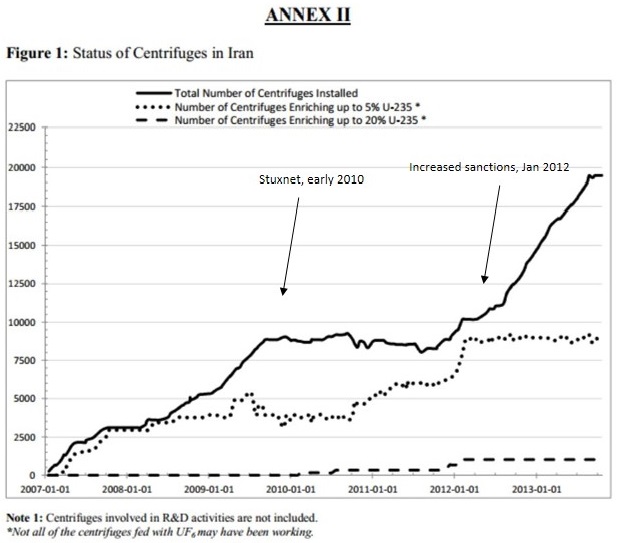Historic P5+1 Interim Agreement With Iran Buys Time for Permanent Solution
There will be much weeping and gnashing of teeth by Bibi (Red Line) Netanyahu, war mongers John (Bomb, Bomb, Bomb, Bomb, Bomb Iran) McCain and Lindsey Graham and paid MEK shills throughout Congress today because an agreement was reached early Sunday morning local time in Geneva, culminating a process that has been over ten years in the making to seek a peaceful route to preventing any weapons development in Iran’s nuclear technology. Although this is only an interim agreement, it takes significant steps toward making it much more likely that any move by Iran to construct a weapon would be detected and would take longer. More or less simultaneously with the announcement of the agreement, AP reported that the US and Iran have been engaging in secret bilateral talks since March, well before Rouhani’s election this summer.
A fact sheet on the agreement is posted at the White House web site.
Concern over Iran’s nuclear program had ratcheted up in early 2012 when Iran significantly increased its rate of production of uranium enriched to 20%. That concern arose because 20% enriched uranium is technically much easier to take the remaining way to the 90%+ needed for a weapon. Before that point, most of Iran’s work had been directed toward uranium enriched below 5%. Netanyahu’s famous “red line” applied to the stockpile of 20% enriched uranium that would be needed to produce sufficient weapons grade uranium for one nuclear bomb. Significantly, the agreement reached today stops all of Iran’s enrichment to 20% and calls for Iran to either dilute back to below 5% or convert to a chemical form that makes it much harder to convert to weapons grade all of Iran’s stock of 20% uranium. In addition to halting enrichment to 20%, the agreement also prevents Iran from increasing its stockpile of uranium enriched to up to 5%.
Recall that when the IAEA’s latest report came out, I noted that Iran had been showing restraint since the beginning of 2012 by not committing any of the new centrifuges it was installing to actual enrichment activity. Further, no new centrifuges had been installed since Rouhani’s election. The agreement reached today includes a commitment by Iran to take steps to reduce the the number of centrifuges that are available for enrichment, among other restrictions on centrifuges. From the fact sheet:
Iran has committed to halt progress on its enrichment capacity:
· Not install additional centrifuges of any type.
· Not install or use any next-generation centrifuges to enrich uranium.
· Leave inoperable roughly half of installed centrifuges at Natanz and three-quarters of installed centrifuges at Fordow, so they cannot be used to enrich uranium.
· Limit its centrifuge production to those needed to replace damaged machines, so Iran cannot use the six months to stockpile centrifuges.
· Not construct additional enrichment facilities.
My initial understanding of the reductions in centrifuges would apply only to those centrifuges that had been installed but were not yet in use. By consulting the actual IAEA report (pdf) from earlier this month, I calculated that there are roughly 15,660 centrifuges installed at Natanz, with about 9048 of them in use. That means there are an excess of 6612 centrifuges installed but not being used. Half of those would be about 3306 centrifuges to be made unavailable. At Fordow, there are about 2976 centrifuges installed, with 744 in operation. Of the 2232 extra centrifuges there, 1674 are to be made unavailable. Combining the numbers for the two facilities, Iran would be giving up access to 4980 centrifuges under this understanding of the agreement.
However, the fact sheet states quite clearly that the reductions apply to all installed centrifuges. With that as the case, then the reduction is much more dramatic, with 7830 centrifuges being made unavailable at Natanz and 2232 at Fordow, for a total of 10,060 centrifuges being made unavailable. These numbers seem to reduce the centrifuges actually being used for enrichment at Natanz, with the number going down from 9048 to 7830. This reduction of 1200 or centrifuges does seem to match with the number shown in the graph in Annex II of the November IAEA report that are associated with enrichment to 20%, so it would appear that those centrifuges are being shut down entirely rather than being shunted back to enrichment to 5%.
Of course, promising these changes is one thing, but verifying them is critically important. The agreement comes with much greater access to Iranian facilities by IAEA inspectors. Returning to the fact sheet: Read more →

